Parker
Street Warehouses




Prior to the World War
II Blitz, on December 23, 1940, Parker Street was lined
on the southwest side, across from Piccadilly Gardens,
by a row of warehouses. The plan below shows the
configuration in 1886.

Below is the site in 1851 on the Adshead map (shown with the permission of Chetham's Library)
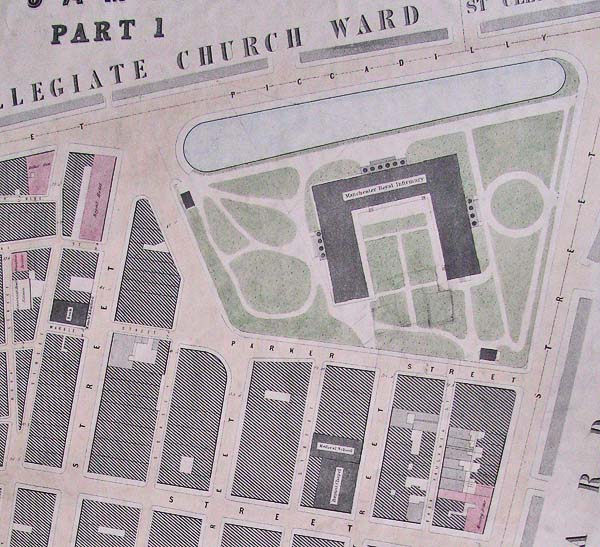
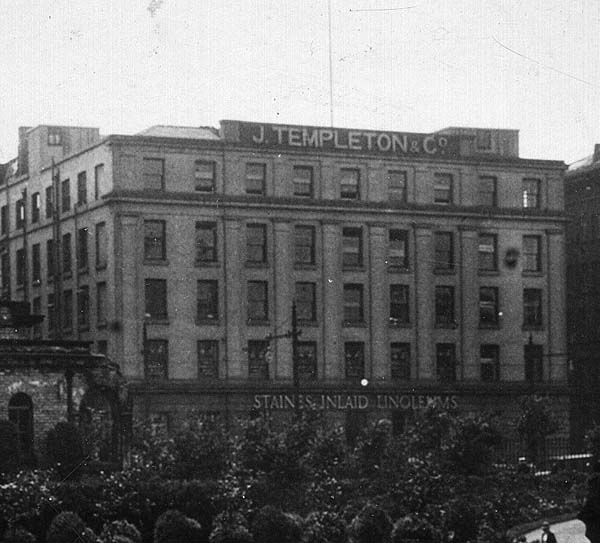

Below is the site in 1851 on the Adshead map (shown with the permission of Chetham's Library)

The occupants of the
various warehouses clearly changed over the
years. The images below were taken circa 1910.

Above you can see
numbers 2 to 4 Parker Street with the name of
Templeton at the top. J. Templeton & Co
was a Glasgow carpet manufacturer with offices in
Manchester, London, Melbourne and Montreal. On
the ground floor is a sign for "Staines Inlaid
Linoleums". At the beginning of the 20th
Century the linoleum manufacturing industry was
centred in three areas of the UK, in East
Scotland, Lancashire and Staines. The
finest linoleum floors were known as 'inlaid
linoleum'. They were extremely durable and
made by joining and inlaying solid pieces of
linoleum. In 1864, the Linoleum Manufacturing
Company Ltd established a factory in Staines to manufacture
it. The 1927 Directory for Manchester &
Salford lists the Linoleum Manufacturing Company Ltd
at 2 Parker Street.
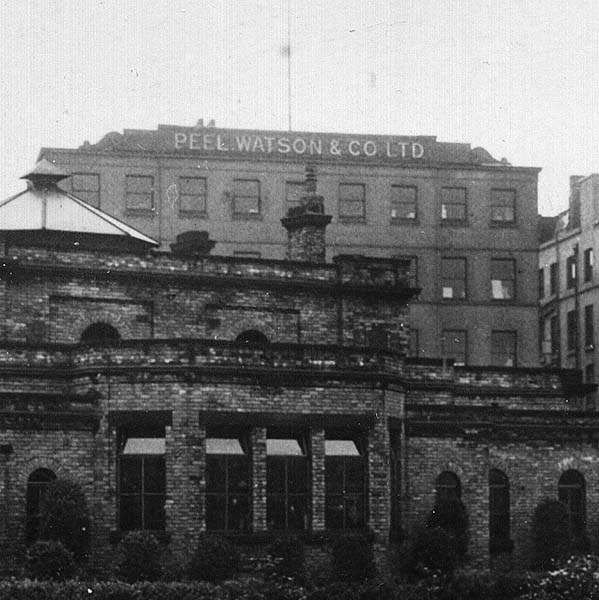
Above is number 6 Parker Street belonging to Peel Watson & Co, warehousemen.

If you click on the link below you can see a photograph taken soon after the blitz along Parker Street.

Above is number 6 Parker Street belonging to Peel Watson & Co, warehousemen.
The life of the
warehouses came to an abrupt end over two nights
in December 1940. On the night of December
22, 270 German bombers deopped 272 tons of high
explosives and 1,032 incendiary bombs.
They returned on the following night to drop a
further 195 tons of high explosive and 893
incendiaries. A total of 684 people were
killed and 2.364 injured and many major building
such as the Cathedral and the Free Trade Hall
were severely damaged. One of the hardest
hit areas was the warehouse district around
Piccadilly Gardens. Below is an aerial
photograph taken in May of 1953, showing the
aftermath. The carparks mark the ruins of
the former warehouses.

If you click on the link below you can see a photograph taken soon after the blitz along Parker Street.
Manchester
Blitz
December
23, 1940
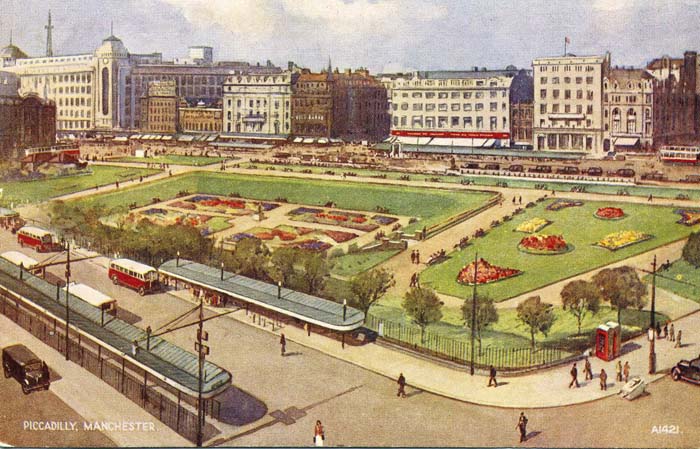
You can see from the
aerial photograph that Parker Street was a bus station
for city buses. It is seen in the image below.

That continues to be the
case today, and along with the buses there is now a
major interchange stop for the Metrolink trams.
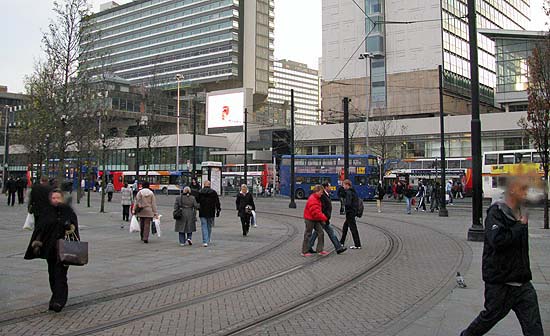
Across Parker Street
from Piccadilly Gardens, where the warehouse once stood,
stands what was originally called Piccadilly
Plaza. The complex of building was designed by
Covell Mathews and Partners and built between 1959 and
1965. It comprised the Piccadilly Hotel (on the left),
Sunley House (the tower in the centre standing end-on to
Piccadilly Gardens) and Bernard House. Below you
can see it under construction.

Today the tower has been
renamed City Tower and it is part of the Bruntwood fleet
of city centre office spaces.

